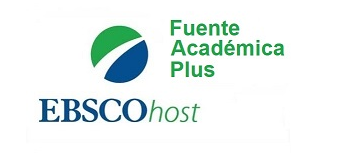The architectural walk and five points of architecture in a real magic machine to live in. Villa Savoye designed by Le Corbusier
DOI:
https://doi.org/10.17981/mod.arq.cuc.24.1.2020.07Keywords:
Le Corbusier, Villa Savoye, flexibility, aesthetic, architectural walkAbstract
When analyzing and knowing in person all the current dynamics of Villa Savoye on the outskirts of Paris, its aesthetics, its functionality and the evidence of the five points that revolutionized architecture and that contributed to the development of modern architecture, the concern about why this iconic architect has been misinterpreted in architecture teaching workshops. In the same way, it is studied if the formal and functional characteristics are a sensible response to rationalism or if personal environmental experiences along with behavioral directions were also of great importance in its conception. For this reason, this article aims to analyze its aesthetics, the experience in the interior space and verify the sense in which the five points of the new architecture were applied. The article highlights the strengths and weaknesses of Villa Savoye and concludes that, in this project, Le Corbusier, not only thought rationally, but thought of it as a spiritual journey or walk that helps meditation and where beauty exists by providing a necessary calm.
Downloads
References
Baker, G. (1994). Le Corbusier. Analisis de la Forma. Barcelona: GG.
Barbosky, M. (2001). Siglo XX Arquitectura. Milan: Electa.
Bermúdez, J. y Navarrete, S. (2019). La dimensión espiritual de la materia arquitectónica. Reflexiones fenomenológicas sobre el brutalismo. Modulo Arquitectura CUC, (23), 89–120. https://doi.org/10.17981/mod.arq.cuc.23.1.2019.05
Cabas, M., Caicedo, D. y Morales, A. (2019). Acerca del diseño especulativo del espacio arquitectonico: Experiencias, metaforas y abstraccion. Modulo Arquitectura CUC, (23), 131–142. https://doi.org/10.17981/mod.arq.cuc.23.1.2019.07
Ching, F. D. (2002). Arquitectura: Forma espacio y orden. Barcelona: GG.
García, B. (2016). La importancia del color en la villa Savoye: Un estudio experimental. [Tesis grado]. Universidad Politécnica de Valencia, Valencia, España. Recuperado de https://riunet.upv.es/handle/10251/92450
Labarta, C. (2011). Paisaje, memoria y proyecto moderno. En, J. Monclús (ed.), Proyectos Integrados de Arquitectura, paisaje y urbanismo 2011, (pp. 108–125). Jaca: Universidad de Zaragoza. Recuperado de http://pupc.unizar.es/wp-content/uploads/2014/11/Libro-Jaca.pdf
Le Corbusier, J. (1998). Hacia una arquitectura. Barcelona: Apóstrofe.
Le Corbusier, J. (1978). Precisiones respecto a un estado actual de la arquitectura y el urbanismo. Barcelona: Poseidón.
Londoño, R. (2014). El sistema didáctico en la explicacion de obras de Arquitectura del movimiento moderno: Cuatro obras vistas por seis autores. Modulo Arquitectura CUC, (13), 11–31. Disponible en https://revistascientificas.cuc.edu.co/moduloarquitecturacuc/article/view/86
Mejía, V. (2011). Le Corbusier: La arquitectura como proyecto de mundo. Aproximación a una filosofía de la arquitectura. RA. Revista de Arquitectura, 13(1), 66–72. Disponible en https://revistadearquitectura.ucatolica.edu.co/article/view/770
O´Byrne, M. C. (2018). La obra arquitectonica de Le corbusier: Una contribucion excepcional al movimiento moderno. Bogotá, D.C.: Ediciones Uniandes.
Saldarriaga, J. (2014). “No es simplemente la promenade architecturale”: interpretaciones sobre Le Corbusier y Rogelio Salmona. Dearq, (15), 118–129. Disponible en https://revistas.uniandes.edu.co/doi/pdf/10.18389/dearq15.2014.09
Shah, M. (2014). Guillaume Jullian de la Fuente: On the fundamental idea of Le Corbusier’s Design. Dearq, (15), 54–61. https://doi.org/10.18389/dearq15.2014.05
Zaparain, F. (2015). El hormigon oculto de la Villa Savoye. EN BLANCO, 7(17), 90–95. https://doi.org/10.4995/eb.2015.5742
Zaparain, F. (2005). Le Corbusier en la Villa Savoye: La otra promenade. Revista de Arquitectura, 7(1), 61–70. Disponible en https://revistas.unav.edu/index.php/revista-de-arquitectura/article/view/25932
Zevi, B. (1981). Saber ver la arquitectura. Ensayo sobre la interpretacion la arquitectura. Barcelona: Poseidón.

Published
How to Cite
Issue
Section
License
Copyright (c) 2020 MÓDULO ARQUITECTURA CUC

This work is licensed under a Creative Commons Attribution-NonCommercial-NoDerivatives 4.0 International License.
CC Reconocimiento-NoComercial-SinObrasDerivadas 4.0


 English
English
 Español (España)
Español (España)






